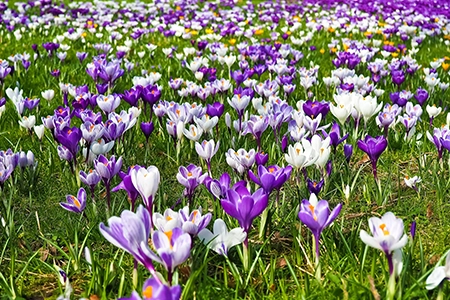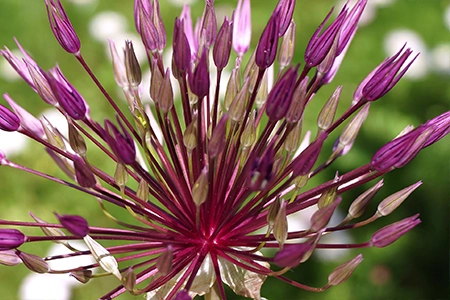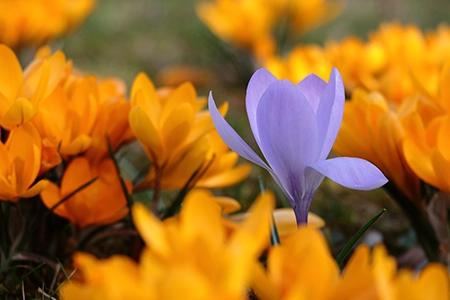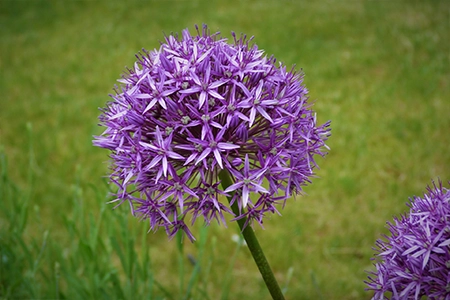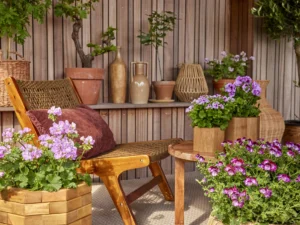Introduction
As the days grow shorter and the air crisper, September offers a golden opportunity for gardeners in the UK to prepare their gardens for a burst of colour come spring.
Bulbs, these underground powerhouses are primed and ready to burst into life after a winter’s rest. This guide will walk you through the importance of planting the right bulbs and how to protect them from adverse weather conditions. We’ll also cover bulbs and tubers that may need extra care to survive the winter.
Planting Bulbs in September
Planting bulbs in autumn is crucial for a vibrant spring display. Bulbs need time to establish roots before the winter chill sets in. The cool, moist soil of autumn is ideal for root development, ensuring that your bulbs will have a head start when the warmth of spring arrives. Additionally, planting bulbs in autumn allows them to undergo a necessary period of cold dormancy, which is essential for flowering. To find out more about how NGS can help you with your planting schemes, visit the Contact Us page!
Protecting Your Bulbs from UK Weather
The UK’s weather can be unpredictable, with frost, heavy rain, and even snow posing threats to your garden. To help your bulbs survive the winter and thrive in the blooming season, consider these protective measures:
Mulching
Applying a layer of mulch helps to insulate the soil, keeping it at a stable temperature and retaining moisture. It also protects bulbs from frost heave, where freeze-thaw cycles push bulbs out of the ground.
Well-Drained Soil
Ensure that your planting area has well-drained soil to prevent bulbs from sitting in waterlogged conditions, which can cause them to rot. If necessary, improve drainage by adding grit or sand to the soil.
Planting Depth
Plant bulbs at the correct depth generally, three times the height of the bulb to protect them from the cold and prevent them from being disturbed by frost.
Five Bulbs to Plant in September
- Amaryllis
- Crocus
- Daffodils
- Tulips
- Alliums
Amaryllis
Amaryllis is known for its large, trumpet-shaped blooms that can add a dramatic flair to any garden. Although often grown indoors, these striking flowers can also be planted outdoors in well-drained soil, particularly in milder areas of the UK. The blooms come in a variety of shades, including red, pink, white, and orange, creating a vibrant display that can brighten up your garden during the darker months.
Typically, Amaryllis will bloom in late winter to early spring, bringing a burst of colour when most other plants are still dormant. To ensure successful growth, plant the bulbs in a sunny spot and water sparingly until you notice new growth.
During the growing season, it’s important to feed them with a balanced fertiliser to support their development. If you’re in a colder area, consider planting Amaryllis in pots that can be easily moved indoors to protect them from harsh weather, ensuring they survive and thrive for the next season.
Crocus
Crocuses are among the earliest bulbs to flower, often peeking through the snow to signal the arrival of spring. These charming flowers are a delightful sight after a long winter, bringing a touch of colour to the garden when few other plants are in bloom. The small, cup-shaped flowers come in shades of purple, yellow, and white, creating a delicate yet vibrant display that heralds the changing seasons.
Typically blooming from late winter to early spring, crocuses are a versatile choice for various garden settings. They thrive when planted in full sun or partial shade, and they prefer well-drained soil. Crocuses can be naturalised in lawns, where they will return year after year, or planted in rockeries for a more structured look. With minimal care, these hardy bulbs will reward you with a cheerful splash of colour each spring.
Daffodils
Daffodils, a classic spring flower, are known for their hardiness and the wide range of varieties available. These cheerful flowers bring a splash of colour to the garden with their bright yellow, white, or orange blooms, each featuring a distinctive central trumpet. Daffodils are a symbol of the season’s renewal, making them a favourite choice for gardeners looking to create a vibrant spring display.
Blooming from early to mid-spring, daffodils thrive when planted in clusters, creating a stunning visual impact. They are adaptable and can grow well in both full sun and partial shade, requiring minimal maintenance. After flowering, it’s important to let the foliage die back naturally, as this process helps to nourish the bulbs for the following year, ensuring a repeat performance of their beautiful blooms.
Tulips
Tulips are a beloved springtime favourite, celebrated for their striking and diverse range of colours. These elegant flowers, with their classic cup-shaped blooms, come in nearly every shade imaginable, adding a burst of vibrancy to any garden. Their versatility and beauty make them a staple in spring gardens, where they can be used to create everything from bold, colourful displays to more subtle, coordinated designs.
Typically blooming from mid to late spring, tulips thrive when planted in sunny, well-drained spots. While they are relatively low-maintenance, it’s wise to consider lifting and storing the bulbs after flowering, particularly in regions with wet winters. This precaution helps prevent the bulbs from rotting and ensures they remain healthy, ready to deliver another stunning display the following spring.
Alliums
Alliums, also known as ornamental onions, are cherished for their striking architectural presence and long-lasting blooms. These distinctive plants feature globular flower heads that come in shades of purple, blue, and white, adding a unique and eye-catching element to any garden. Their bold structure and vibrant colours make alliums a favourite choice for gardeners looking to create a dramatic focal point.
Blooming from late spring to early summer, alliums thrive when planted in full sun and well-drained soil. They are particularly effective when used in borders or as standout features within a garden design. Once established, alliums require minimal care, making them a low-maintenance option for those seeking both beauty and ease. However, it’s important to avoid overwatering, as excessive moisture can lead to bulb rot, compromising their growth and longevity.
Protect These Bulbs and Tubers in Winter
While many bulbs are hardy enough to withstand the UK’s winter, some, particularly tubers, need extra care to survive. Here are three types that may need to be moved to warmer locations:
Dahlias
Dahlias are treasured for their stunning blooms, which come in a wide array of shapes and colours, making them a popular choice for adding vibrant beauty to gardens. However, their tubers are not frost-tolerant. To protect them, it’s important to lift the tubers after the first frost blackens the foliage, then dry them and store them in a cool, frost-free place until spring.
Cannas
Cannas are known for their bold, tropical foliage and vibrant flowers, which bring an exotic touch to any garden. However, to ensure their survival through the winter, it’s essential to lift the rhizomes before the first frost. Once lifted, store them in a cool, dry place, and replant them in late spring for another season of lush, colourful growth.
Gladiolus
Gladiolus are known for their tall spikes of flowers, making them a favourite in cutting gardens. In colder areas, it’s essential to lift the corms after flowering, dry them, and store them in a cool, dry location. In milder regions, they can be left in the ground with a thick layer of mulch for protection.
How NGS Can Help You Plan for the Changing Seasons
Gardening can be a rewarding but challenging endeavour, especially considering the UK’s weather. With expert advice and carefully curated planting schemes, NGS ensures that your garden not only survives but thrives through every season.
Our plant maintenance guide is an invaluable resource, offering detailed care instructions tailored to each plant’s unique needs. Don’t get caught out by the changing seasons! Let NGS guide you to a beautiful, resilient garden all year round.
To find out more about how NGS can help you achieve your dream garden visit the Contact Us page!
Further Reading
Do you want to learn more about how you can maintain year-round interest in your garden? Below are some great articles that will help you achieve your ideal outdoor space!
What to Plant in October – Brilliance of Bare-Root Fruit Trees
Winter Perennial Protection: Shielding your Garden from the Cold
Raised Bed Planters – Create Beautiful Spring Borders
Attracting Pollinators with Bee Friendly Plants



